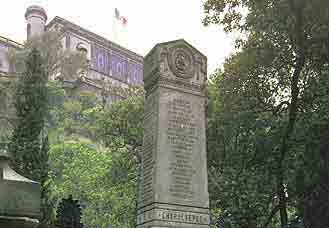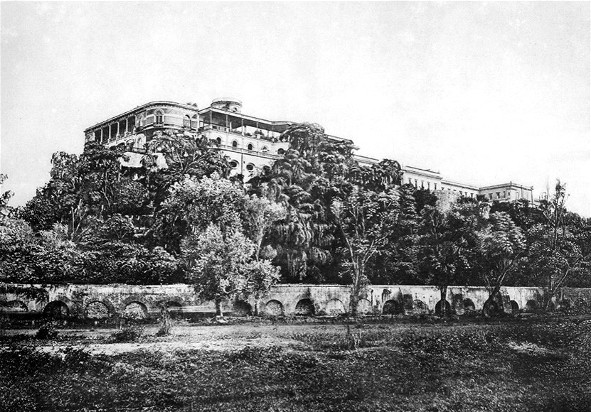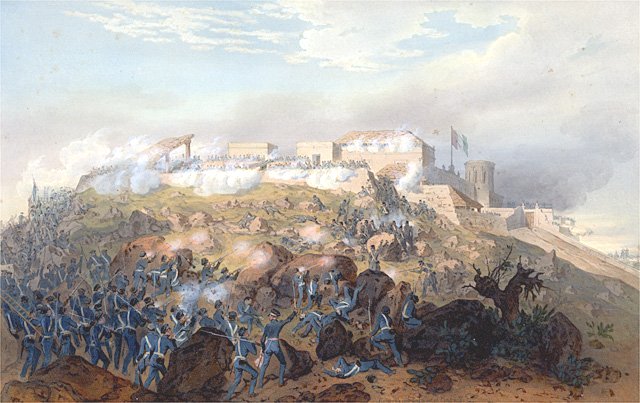A Summary


The Battle to take Chapultepec Castle started at day brake of the 13th with artillery and canon attack by the Americans which left the Castle visibly scarred. At 09:00 am the Americans launched three assault columns under heavy artillery and defeated the San Blas Battalion, and Santa Anna's foot soldiers. Two assaults parties of close to three hundred strong each, with scaling ladders attacked the Castle from the west and south, advancing up the hillside. The remaining teenage cadets, barricaded inside the castle, surprised the 600 strong raiding parties by detaining their advance for several hours. In order to keep their spirits up, these brave young men answered the unrelenting attack of their enemy not only with gunfire, but also with cheers of �Viva M�xico! Much later, the scaling-ladders were brought up and planted by the storming parties. The first American soldiers in the assault were cast down, killed or wounded. Once a lodgment was made, the two storming parties led by Captain McKenzie and Casey penetrated the Castle.
The young cadets fought nonstop, body to body, giving it their all. When General Bravo ordered retreat, most of the cadets refused and fought to the death against the superior U.S. forces. One by one they fell to their death, were wounded, or imprisoned. Once it became clear that the taking of the Castle was imminent, Cadet Juan Escutia (1827-47) who was in the watchtower of the Castle, exposed himself in order to remove the national flag so that it would not be desecrated by the enemy, and was gravely wounded in the process. He grabbed the Mexican flag, wrapped it around himself and jumped off the castle point, landing close to where the first monument recognizing this tremendous feat of courage would be constructed. The cadets are eulogized in Mexico as the Ni�os H�roes, the "Boy Heroes" or Heroic Cadets.
The following cadets died defending the Military Academy: Lieutenant Juan de la Barrera and Second Lieutenants Francisco M�rquez, Fernando Montes de Oca, Agust�n Melgar, Vicente Su�rez y Juan Escutia. The following cadets where wounded: Second Lieutenant Pablo Banuet and Cadets Andr�s Mellado, Hilario P�rez de Le�n y Agust�n Romero. The following students and teachers where taken as prisoners: General Monterde (the Director of the Academy); Captains Francisco Jim�nez and Domingo Alvarado; Lieutenants Manuel Alem�n, Agust�n D�az, Luis D�az, Fernando Poucel, Joaqu�n Argaiz, Jos� Espinosa, and Agust�n Peza; Second Lieutenants Miguel Poucel, Ignacio Peza, and Amado Camacho; Sergeant Te�filo Nores, Corporal Jos� Cu�llar, Drummer Sim�n �lvarez, Cavalryman Antonio Rodr�guez, and 37 cadets. The cadets were aged between 13 and 18 years.
Once the battle was over, one of the American officers looked at the faces of the dead cadets, and exclaimed in surprise: "But these are just children!" That was the origin of the expression "Boy Heroes".

